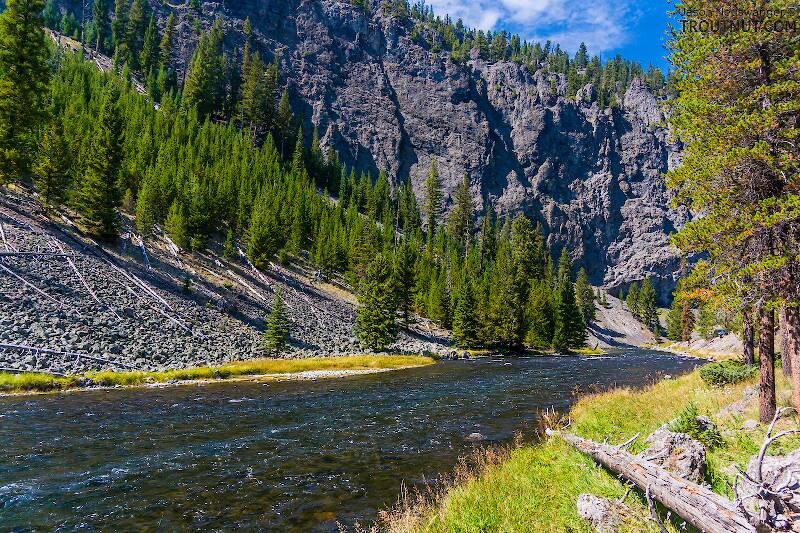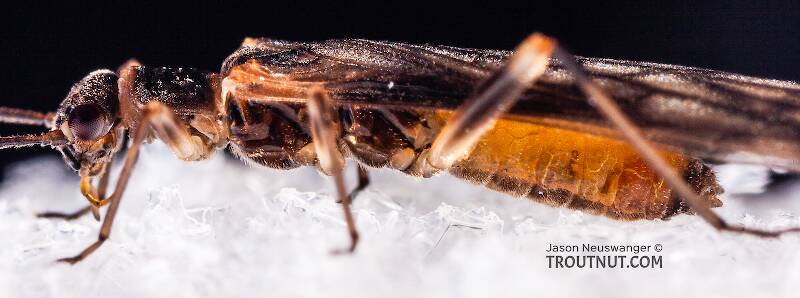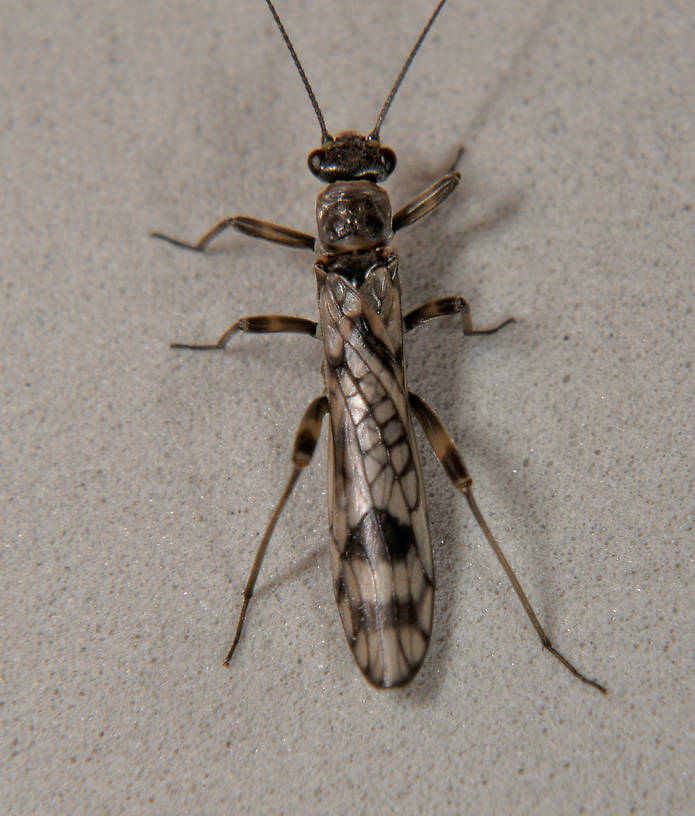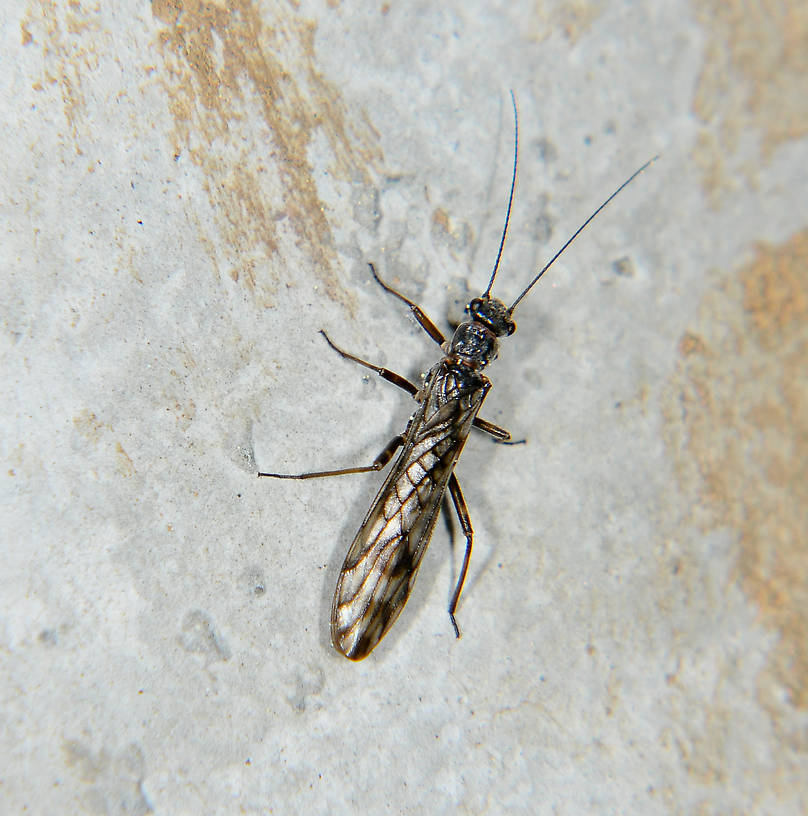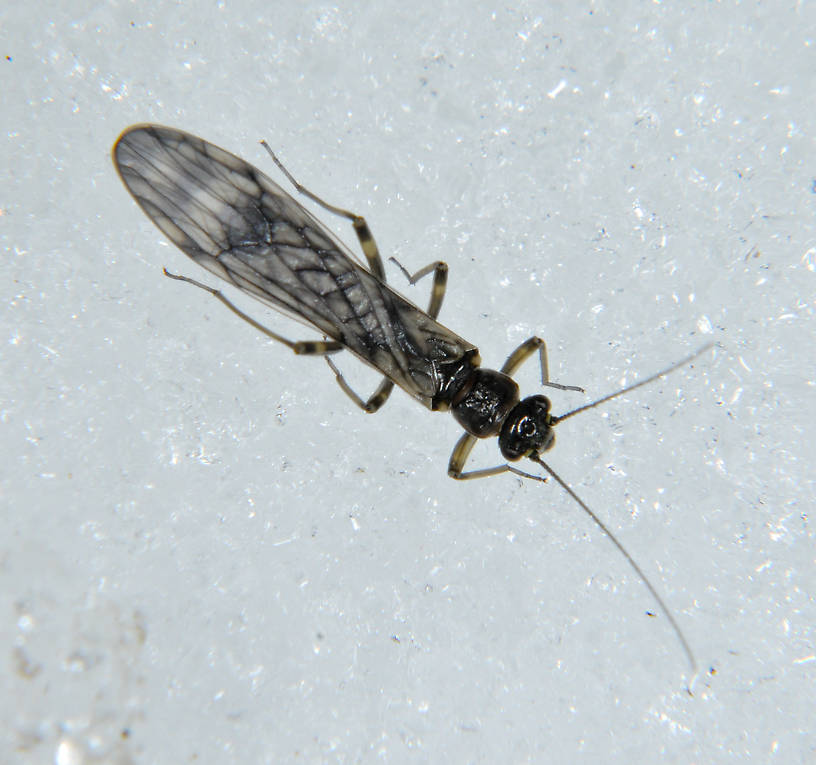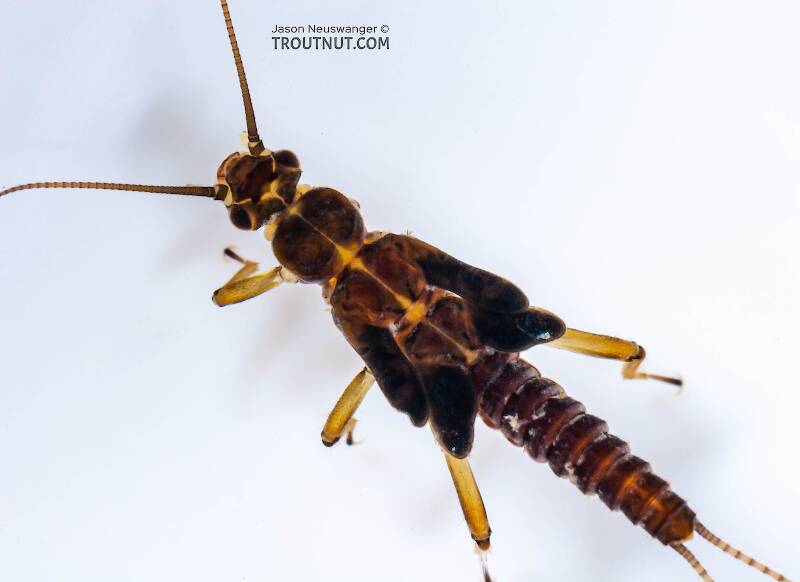
Blue-winged Olives
Baetis
Tiny Baetis mayflies are perhaps the most commonly encountered and imitated by anglers on all American trout streams due to their great abundance, widespread distribution, and trout-friendly emergence habits.
Featured on the forum

This specimen keys pretty easily to Onocosmoecus, and it closely resembles a specimen from Alaska which caddis expert Dave Ruiter recognized as this genus. As with that specimen, the only species in the genus documented in this area is Onocosmoecus unicolor, but Dave suggested for that specimen that there might be multiple not-yet-distinguished species under the unicolor umbrella and it would be best to stick with the genus-level ID. I'm doing the same for this one.

Troutnut is a project started in 2003 by salmonid ecologist Jason "Troutnut" Neuswanger to help anglers and
fly tyers unabashedly embrace the entomological side of the sport. Learn more about Troutnut or
support the project for an enhanced experience here.
Stonefly Family Nemouridae (Forestflies)
Where & when
Time of year : Late winter to mid-spring
In 357 records from GBIF, adults of this family have mostly been collected during April (27%), May (22%), March (15%), June (15%), July (8%), and February (6%).
In 120 records from GBIF, this family has been collected at elevations ranging from 20 to 11135 ft, with an average (median) of 6070 ft.
Family Range
Specimens of the Stonefly Family Nemouridae
1 Male Adult
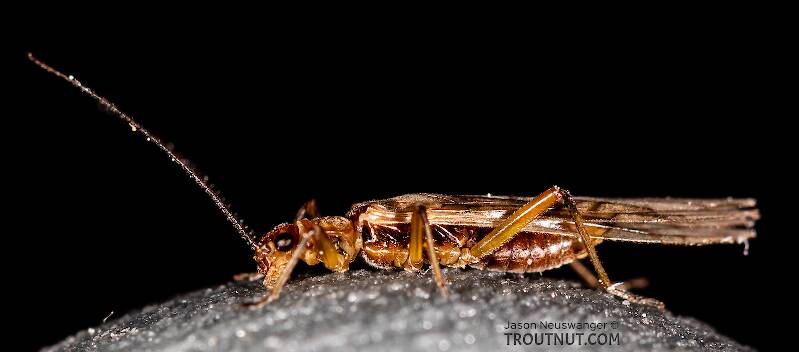
This is the smallest stonefly I've ever collected, with a body only 5.5 mm long.
Although not in-focus in my pictures, its first tarsal segment is similar in length to the third, while the second is much shorter. This helps with family-level identification.
Examining this specimen under a microscope shows a membranous lobe on the dorsal base of the cerci, which is the key characteristic in Merritt & Cummins (4th ed.) to place the genus definitively as Malenka.
Following the species key in Jewett Jr's Stoneflies of the Pacific Northwest, the species appears to be Malenka tina. My dissecting microscope seems to show sternite 9 ending in a rounded knob, which distinguishes it from Malenka bifurcata, but the detail is hard to work out.
Also worth noting is that Montana appears to have this species, whereas birfucata is not know there: http://fieldguide.mt.gov/displaySpecies.aspx?family=Nemouridae
Although not in-focus in my pictures, its first tarsal segment is similar in length to the third, while the second is much shorter. This helps with family-level identification.
Examining this specimen under a microscope shows a membranous lobe on the dorsal base of the cerci, which is the key characteristic in Merritt & Cummins (4th ed.) to place the genus definitively as Malenka.
Following the species key in Jewett Jr's Stoneflies of the Pacific Northwest, the species appears to be Malenka tina. My dissecting microscope seems to show sternite 9 ending in a rounded knob, which distinguishes it from Malenka bifurcata, but the detail is hard to work out.
Also worth noting is that Montana appears to have this species, whereas birfucata is not know there: http://fieldguide.mt.gov/displaySpecies.aspx?family=Nemouridae
3 Female Adults
1 Adult
2 Nymphs
Discussions of Nemouridae
deligon
2 replies
Posted by Deligon on Jan 15, 2010
Last reply on Jan 22, 2010 by Martinlf
FISHED THE HIWASSEE RIVER IN TENN , TODAY JAN 15 2010 WEATHER HIGH 50,S
AFTER A COUPLE OF WEEKS OF TEMPS IN THE TEENS, EXPECTED MIDGE HATCH,
WE HAVE A SHAD KILL WHICH I WANTED TO FISH STREAMERS HOPING TO TAG A BIG BROWN. BUT THE WINTER STONEFLY HATCH TOOK THE SHOW. DRY FLY FISHING IN JAN. WHAT IS THE LIFE CYCLE OF THESE FLIES? CAN THEY TOLERATE THE COLD NIGHT TEMPS? DO THEY EAT AND DRINK? WHOW DO THEY MATE?
THE MORE I LEARN THE MORE I DISCOVER I DON'T KNOW
DELIGON
AFTER A COUPLE OF WEEKS OF TEMPS IN THE TEENS, EXPECTED MIDGE HATCH,
WE HAVE A SHAD KILL WHICH I WANTED TO FISH STREAMERS HOPING TO TAG A BIG BROWN. BUT THE WINTER STONEFLY HATCH TOOK THE SHOW. DRY FLY FISHING IN JAN. WHAT IS THE LIFE CYCLE OF THESE FLIES? CAN THEY TOLERATE THE COLD NIGHT TEMPS? DO THEY EAT AND DRINK? WHOW DO THEY MATE?
THE MORE I LEARN THE MORE I DISCOVER I DON'T KNOW
DELIGON
Start a Discussion of Nemouridae
References
- Baumann, Richard W. 1975. Revision of the Stonefly Family Nemouridae (plecoptera) : a Study Of The World Fauna At The Generic Level. Smithsonian Contributions to Zoology undef(211): 1-74.
- Swisher, Doug and Carl Richards. 2000. Selective Trout. The Lyons Press.
Stonefly Family Nemouridae (Forestflies)
Taxonomy
6 genera (Lednia, Nanonemoura, Ostrocerca, Paranemoura, Shipsa, and Visoka) aren't included.

